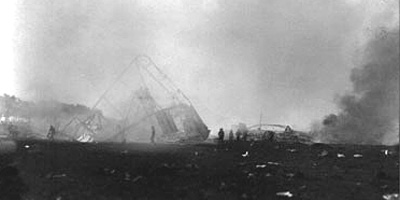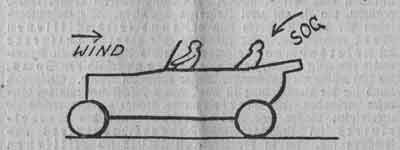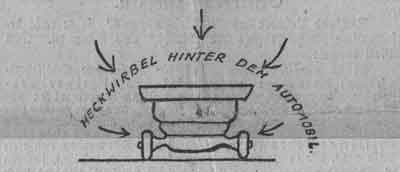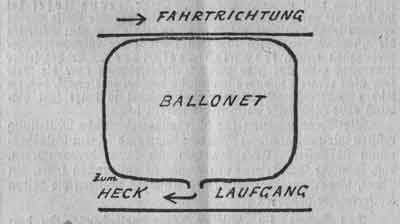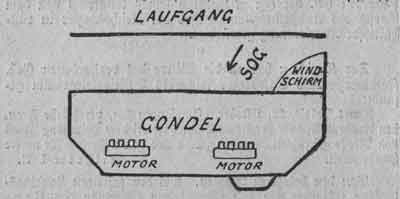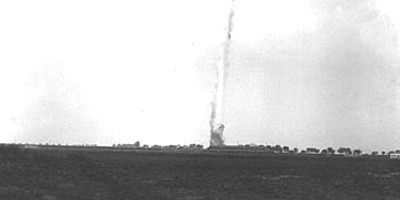L2 Das Wrack
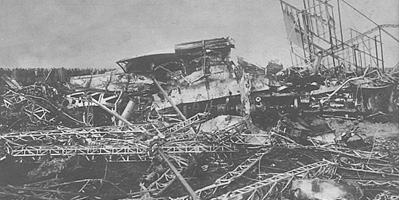
Das Wrack des Marine-Luftschiff L2 (Zeppelin LZ 18) an der Unglücksstelle. Beschreibung und Bilder.
Die Überreste des Luftschiffes lassen deutlich erkennen, daß der Ballon nach dem Brande senkrecht in die Tiefe gestürzt ist. Die Gondeln mitsamt den schweren, viele Zentner wiegenden Motoren haben sich tief in die Erde eingewühlt, und die kurze Grasnarbe, die das Feld deckt, ist in einem Umkreise von etwa 10 bis 15 Metern verbrannt.
Ein scharfer, alles durchdringender Geruch von verbrannter Leinewand, Gummi und von Leichen durchdringt die Luft, so daß es in der unmittelbaren Umgebung des Trümmerhaufens kaum auszuhalten ist.
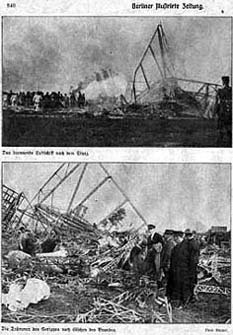
Die Propeller der vordersten Maschinengondel sind noch fast unversehrt. Ebenso die Kardanwellen, die die Schrauben mit dem Motor verbunden haben. Die beiden mächtigen Motoren haben sich tief in den Boden eingewühlt. Sie waren noch nach einer Stunde heiß. Irgendetwas Besonderes ließ sich jedoch nicht feststellen, obwohl gerade sie die Ursache des furchtbaren Unglücks gewesen sind.
Die Führergondel, die ganz vorn am “Zeppelin“, noch vor der ersten Maschinengondel angebracht war, ist vollständig zusammengebogen und in sich selbst zusammengebrochen. Die starken Aluminiumwände sind wie dünnes Blech zerknickt. Der Mittelgang, der alle drei Gondeln verband, läßt sich noch jetzt in seinen äußeren Umrissen wenigstens erkennen. Die dünnen Spanten, die an manchen Stellen kaum zentimeterdick sind, liegen vollständig deformiert und geknickt umher.
Wie groß die Explosion gewesen ist, läßt sich schon daraus erkennen, daß derartige Rippen und Spanten ebenso wie Teile der Gondeln, Holzstücke usw. bis auf den etwa 600 Meter entfernten Flugplatz geschleudert worden sind. Hier haben die Überreste sich zu einer Höhe von 4 bis 5 Metern emporgetürmt. Sie begruben die Gondel, in der sich nach der Ansicht der Sachverständigen noch Leichen befinden müssen.
Das Heck hat am wenigsten gelitten. Die Steuerzellen zeigen zum Teil noch ihre Verkleidung und halbverbrannte Leinewandfetzen hängen allenthalben herum. Die mächtigen Benzintanks liegen vollständig geleert umher. Ihr Inhalt hat sich im Augenblick der Explosion auf die Gondeln und in das Innere entleert. Die mächtigen Aluminiumfässer zeigen aber noch deutlich ihre Form.
Hier und da liegen Kleidungsstücke der ums Leben gekommenen Mannschaften umher. Westen, Lederhosen und Jacken, meist völlig verkohlt, boten sich dem Auge des entsetzten Beobachters dar. Den furchtbarsten Anblick aber boten die Leichen. Fast alle sind bis zur Unkenntlichkeit verbrannt und lassen sich nur schwer rekognoszieren. Krankenautomobile und -wagen fuhren unablässig unter der Leitung des Direktors des Britzer Krankenhauses über den Platz und brachten die menschlichen Überreste fort.
In der Tasche des Führers, Kapitänleutnants Freyer, fand man eine Liste derjenigen Personen, die an der Unglücksfahrt teilgenommen haben.
